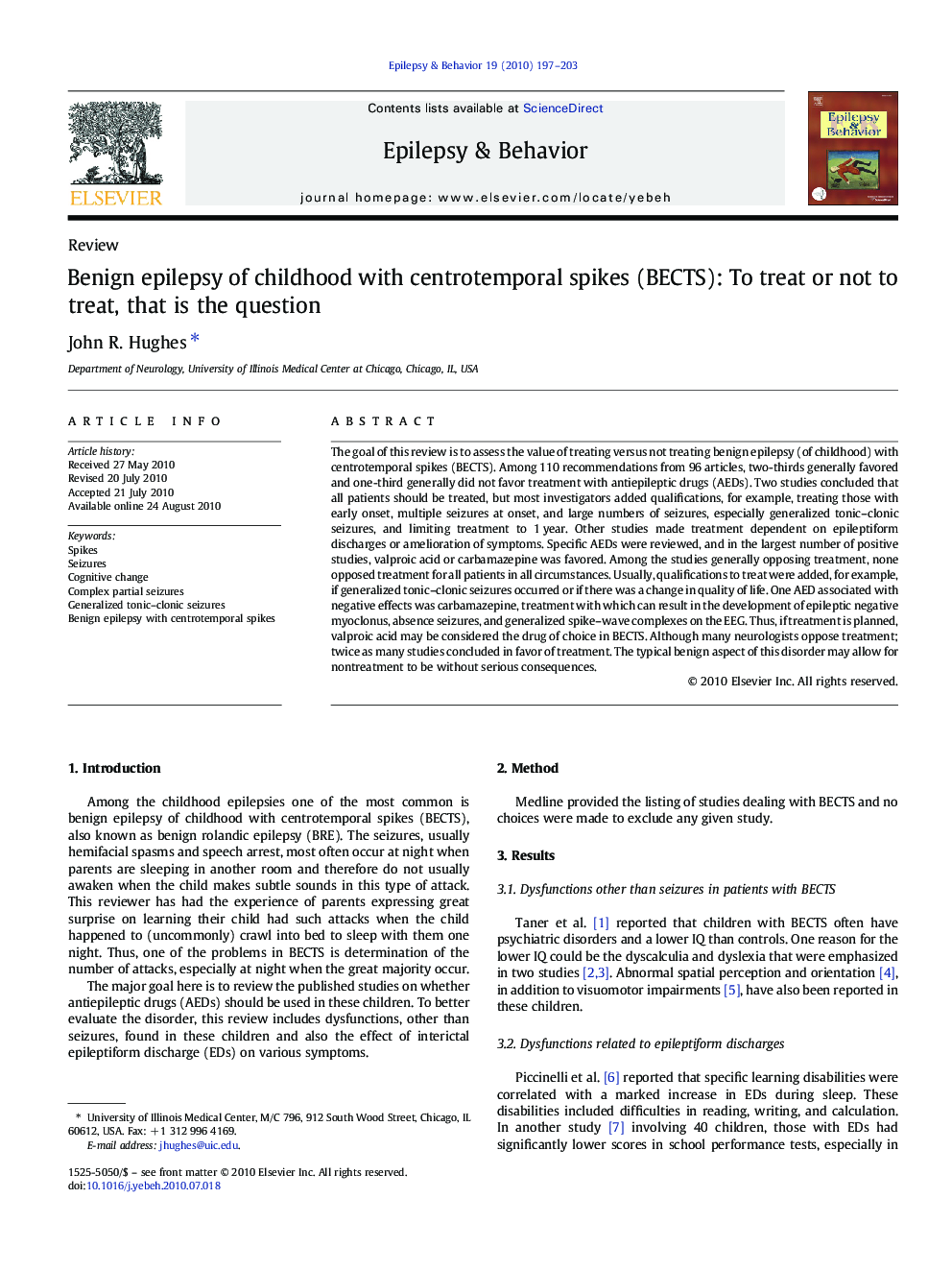| کد مقاله | کد نشریه | سال انتشار | مقاله انگلیسی | نسخه تمام متن |
|---|---|---|---|---|
| 3050062 | 1185944 | 2010 | 7 صفحه PDF | دانلود رایگان |

The goal of this review is to assess the value of treating versus not treating benign epilepsy (of childhood) with centrotemporal spikes (BECTS). Among 110 recommendations from 96 articles, two-thirds generally favored and one-third generally did not favor treatment with antiepileptic drugs (AEDs). Two studies concluded that all patients should be treated, but most investigators added qualifications, for example, treating those with early onset, multiple seizures at onset, and large numbers of seizures, especially generalized tonic–clonic seizures, and limiting treatment to 1 year. Other studies made treatment dependent on epileptiform discharges or amelioration of symptoms. Specific AEDs were reviewed, and in the largest number of positive studies, valproic acid or carbamazepine was favored. Among the studies generally opposing treatment, none opposed treatment for all patients in all circumstances. Usually, qualifications to treat were added, for example, if generalized tonic–clonic seizures occurred or if there was a change in quality of life. One AED associated with negative effects was carbamazepine, treatment with which can result in the development of epileptic negative myoclonus, absence seizures, and generalized spike–wave complexes on the EEG. Thus, if treatment is planned, valproic acid may be considered the drug of choice in BECTS. Although many neurologists oppose treatment; twice as many studies concluded in favor of treatment. The typical benign aspect of this disorder may allow for nontreatment to be without serious consequences.
Research Highlights
► The goal of this review is to assess the value of treating vs not treating benign epilepsy (of childhood) with centro-temporal spikes (BECTS). Among 110 recommendations from 96 articles, 2/3 generally were in favor of treatment and 1/3 were usually not in favor of anti-epileptic drugs (AEDs). Two studies concluded that all patients should be treated, but most investigators added qualifications to their advice to treat. Examples of the latter are early onset of BECTS, multiple seizures at onset, treatment for only one year and large numbers of attacks, especially generalized tonic-clonic (GTC) seizures. Other studies have made treatment dependent on the epileptiform discharges or the amelioration of symptoms. Specific AEDs were reviewed and the largest number of positive studies were found using VPA or CBZ. For studies generally opposing treatment no investigation was found opposing treatment for all patients under all circumstances. Usually, qualifications to treat were added, like if GTC seizures had occurred or if there was a change in the quality of life involved. Specific AEDs with negative effects were mainly involving CBZ with the development of epileptic negative myoclonus, absence attacks and generalized spike-wave complexes on the EEG. Thus, if treatment is planned, VPA may be considered the drug choice in BECTS. Many neurologists are generally against treatment; however, twice as many studies have drawn a conclusion in favor of treatment. The typical benign aspect of this disorder may allow for the non-treatment to be without serious consequences.
Journal: Epilepsy & Behavior - Volume 19, Issue 3, November 2010, Pages 197–203